I had intended to write a single blog post, describing a single night in the hospital after my surgery – however, as usual I am unable to write small amounts of text, and so here is part one of what looks like it will be an increasingly wordy description of my injury, my hospitalisation, and my recovery.
Day 1
In the early afternoon of Monday August 22nd I fell over while playing short tennis at Center Parcs in Cumbria during a family holiday. Let me just give you the dictionary definition of short tennis.
short tennis : noun : tennis played on a small court with a small racket and a soft ball, used especially as an introduction to the game for children.

Jonathan serving
That’s right, I fell over playing children’s tennis. Normally I refrain from sport. Years of ridicule and humiliation while at school gave me a healthy disrespect for any kind of group sporting activity which involves moving around. I can often be heard saying, “I don’t run“. It’s not something I’m proud of, it’s just been a basic fact of my existence for the last 30 odd years. So I was more surprised than anyone to find myself playing short tennis, even if it is supposed to be a little easier on the body than full length tennis. It was pretty energetic, although most of the energy was spent with one of us retrieving missed balls from the courts of other players. We were playing doubles and there were probably only 4 players on our own court for 2% of the match, the other 98% of the game was spent with one or sometimes more than one of us on someone elses court picking up balls. Inevitably then, I chased another errant ball across our court and towards the net of the court on my left. I was lumbering at some pace, and then I was falling. Fate, it seems, is not without a sense of irony.
I don’t really remember what happened. I don’t know if I tripped, or slipped, or stumbled. I don’t know if something in my foot snapped causing me to fall, or if falling caused me to snap something in my foot. If you know me, you know I’ve got pretty good balance, I do not fall over. Except I had. I realised I was basically lying flat on my face on the court of an unknown family with two young kids. There was no way on this earth I was going to stay there, so I stood up, and walked back to the bench near our court. I was holding my left arm close to my body and bent at the elbow, and I knew something was wrong. Adrenalin is amazing though, so I made it back to the bench and sat down. My oldest nephew, Jonathan, asked if I was okay, and I said no. I think he asked if I wanted him to get someone, and I think I said, yes, get everyone.
I was pretty certain at that stage that I’d either dislocated my shoulder or broken my arm. I couldn’t use my shoulder muscles to move my arm in any direction, although I could bend it at the elbow. It hurt, a lot. I got my left shoe off as well because I could feel my left foot throbbing, and it was swelling, alarmingly, but I was more worried about my arm. I assumed I had just sprained my foot or ankle.
People from Center Parcs started to arrive. The local first aid person told me the nurses were busy with a sick child, but would be along as soon as possible. Until then, she tried to help. She tried twice to put a sling on me, admitting before she’d even started that she wasn’t very good at it. She failed both times, and the pain was just too acute for me to let her try again. She was quite apologetic though and I tried not to be too annoyed, or too passive aggressive. I probably failed. Someone brought me some carrier bags with ice in them – I guess from the bar. They really helped on my foot, although given it was just ice in a plastic carrier bag it was pretty harsh pretty quickly, but didn’t do much for my arm or shoulder. After about 15 minutes, maybe longer, two nurses arrived, with gas & air! The next period of time is a little blurry (gas & air)! I remember the nurse explaining the impact of the gas, and how it might make me feel sick and to tell her if that was the case. I remember her asking me if I had any other conditions, to which I responded diabetes and chronic sarcasm. Then I remember everything getting very heavy and woozy and spinney. My nephew tells me that when they tried to take the breathing mask away from me, I refused, but I don’t remember that. The gas & air didn’t solve the pain, it just meant I cared less. They offered me additional pain relief, which meant paracetamol. I kind of laughed, it’s never done anything for me in terms of pain relief on its own but I took some anyway. The nurse did manage to get a sling on my arm without any problem at all.
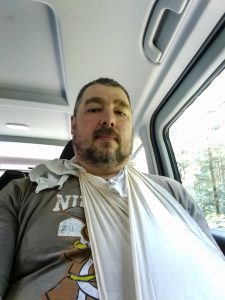
Me in the 4×4 on the way to the car park, an hour after the fall
The nurse wasn’t convinced I’d dislocated my arm, she said it was probably just a muscle injury and she thought I’d sprained my ankle. This was the first misdiagnosis of the whole process, and I can’t really blame her, she’s not after all a specialist, but I was pretty sure she was wrong. Center Parcs had called an ambulance pretty early on in the process, but the nurses had received an update saying it would be 4 hours before it arrived (my advice, never get really sick anywhere in Cumbria). Since one of them was convinced it wasn’t a bone injury and certainly not life threatening, they asked if I was okay being driven to the hospital as it would be much quicker. The hospital in this case was the A&E department at Penrith, about 20 minutes away from the Whinfell Center Parcs site. My brother-in-law Paul offered to drive, so the only issue then was getting me from the sports hall, to Paul’s car. Center Parcs staff said they’d bring the mini-bus over, until the driver told them on the radio it was full of furniture he was moving around and it would be another hour before it was free. In the end, they found a 4×4 that was free, wheeled me in a chair to the car, got us to the car park, and after shuffling and hobbling into the vehicle, we set off.
Greté had been in the lodge the whole time – she’d been resting her back after a tough couple of days. I didn’t want to disturb her when I first fell over, and didn’t want her having to hang around in a hospital waiting for me. So Paul drove and Jonathan stayed with me so Paul could get back to the kids. I’m still not sure Greté has truly forgiven me yet.

Me, my sling, and my nephew Jonathan in A&E
So we arrived at Penrith A&E and honestly, I expected to be there about a hundred hours. Small A&E, big area, plenty of people already in the place, but they saw us quite quickly. They had a wheelchair for me and Jonathan kindly pushed me around. We did, at one point, misplace a boot moving between the main waiting room and x-ray, but we recovered it before it walked away on its own. Can’t fault the staff at Penrith A&E though. The nurse who did my assessment was great, the person who did my x-rays was really apologetic about the position I had to get my arm and foot into (that hurt, a lot), and the GP who reviewed it all was thorough and explained everything. In fact, the GP was really good, because he pretty much diagnosed both injuries. At one point he said to me, “I’m a GP, I don’t spend a lot of time looking at x-rays ….” He went on to say I’d fractured my humerus and my foot, and that he was also concerned by a shadow on the arm x-ray, which might have meant it was dislocated as well.
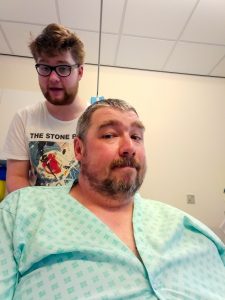
The first of many horrific hospital gown experiences.
He tried several times to get hold of the on-call orthopaedic surgeon at Carlisle hospital and failed. I waited with him while he tried. I thank him for that – he was serious about trying to get me referred and trying to get me the right help. Everyone at Penrith were pretty good to be honest. He eventually gave up trying to get hold of the specialist for a discussion and referred me directly to Carlisle, but said I’d have to go to their A&E since he couldn’t get hold of the person he wanted to speak to. He sent me to the plaster room where the nurses put a moon-boot on my foot, and a more extensive sling on my arm.
Now I just had to get to Carlisle hospital! Greté was pretty angry at this stage and suffering quite a lot of panic, and for that I am eternally sorry. We had quite a fraught conversation on the phone and Paul brought her over so we could all go to Carlisle hospital. At this stage we didn’t know if I was going to be admitted or just seen by the specialist, but there wasn’t much we could do. I was conscious that I was starting to interfere with the enjoyment of the holiday for Paul and the kids (and Greté).
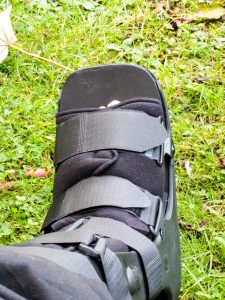
My foot.
I sat and stared at my new boot, while we waited for Paul to arrive. A little drive later and we got to Carlisle – a regular hospital. Greté waited with me this time, and eventually the orthopaedic specialist checked my x-rays. He didn’t ask me any questions, didn’t really talk to me much, and didn’t examine me. He glanced at the x-rays. He confirmed I had a fractured humerus but was disdainful of the GP’s assessment about a ‘shadow’, proclaiming it wasn’t dislocated and simply needed gravity to heal. Then, and in his own words, “I’m not even sure your foot is fractured”. I’m not a doctor, I had to trust him. The GP, after all, had said he didn’t spend all his time looking at x-rays, and this guy did. So we asked should we head home and speak to the local hospital or continue on holiday? He said we didn’t need to rush, finish up the holiday if we wanted and make an appointment when we got back to Nottingham a few days later.
This, it turns out, was terrible advice. Not only was he partially wrong about the arm fracture, he was totally wrong about the foot. Dangerously so.
I don’t know if he let disdain for the GP who referred us get in the way, or if he was just having a bad day, or if in fact, he was just sick of people from Center Parcs falling over, hurting themselves and coming to him to get fixed, but he misdiagnosed me. He did at least prescribe some pain killers.
Myself and Greté had a bit of a chat while we waited for Paul to come and get us. We were uneasy about his manner, and I was clearly in a lot of pain. However by this time, it was already quite late, and we weren’t going to be driving back to Nottingham without quite a bit of effort packing and the like. We decided that if I had a comfortable night in the lodge we’d consider staying a few more days, but if I couldn’t get any rest or was in pain, we’d head back in the morning.
I still had the sling (and had no movement in my arm at all) and boot, although I took the boot off to sleep because it was quite uncomfortable. I slept sitting up in the lodge, and got a few hours mostly thanks to the codeine. The longer I sat though, the more obvious it was to me that staying was the wrong choice. I didn’t want the family pushing me around what is quite a hilly Center Parcs, and the three main things I wanted to do while I was there (walk, swim and take photos) were all off the menu.
Day 2

My lovely sling, and a padded neck rest keeping my arm off the door – during the drive back from Cumbria.
So early in the morning of Tuesday 23rd August, with the help of everyone else, we packed and started the drive home. Since I learned to drive a few years ago, I’ve been doing all the long distance driving, and it was pretty hard work for Greté doing the whole trip behind the wheel, but we made it in one piece, and I spent the first of what would turn into many nights sleeping on the sofa in our lounge. At this stage, although uneasy, we were still working on the assumption that the orthopaedic specialist had been correct – but Greté rang Derby hospital as soon as we got back – and they gave us an appointment on Wednesday 24th to come in for assessment at the Trauma and orthopaedics department. At this stage, I was still hobbling about on the moon-boot, confident my foot was going to be fine.
To be continued …

 I was in too much pain for the first few days at home to do anything though – which meant a lot of television. Eventually I decided to stop the brain rot caused by that and whacked Mass Effect 1 into the Xbox One now that it’s playable under the backwards compatibility feature. I completed a full play-through with all the DLC. That led to Mass Effect 2 (360 only, not backwards compatible yet) and some fun and games getting the ME1 saves to import (saved on the Xbox One, but used on the 360). Another full play-through with all DLC. Inevitably, I finished ME3 (and all DLC)! after that as well. It’s not the first time I’ve played them, although I’ve played ME2 most, I’ve completed ME1 and ME3 a couple of times at least. I think that was around 120 hours of gaming.
I was in too much pain for the first few days at home to do anything though – which meant a lot of television. Eventually I decided to stop the brain rot caused by that and whacked Mass Effect 1 into the Xbox One now that it’s playable under the backwards compatibility feature. I completed a full play-through with all the DLC. That led to Mass Effect 2 (360 only, not backwards compatible yet) and some fun and games getting the ME1 saves to import (saved on the Xbox One, but used on the 360). Another full play-through with all DLC. Inevitably, I finished ME3 (and all DLC)! after that as well. It’s not the first time I’ve played them, although I’ve played ME2 most, I’ve completed ME1 and ME3 a couple of times at least. I think that was around 120 hours of gaming. I’ve loved BioWare games for a long time, they’re a part of my gaming history on the PC and consoles. Baldur’s Gate and Neverwinter Nights have special places in my gaming memory. I loved the dialog, I loved the characters and the phrases. Hell, myself, my wife and our gaming friends are still using quotes from the Baldur’s Gate series ((Give a man a fish and he can eat for a day, give him a sword and he can chow down on the marrow of evil!)) , when roleplaying, gaming and sometimes shopping.
I’ve loved BioWare games for a long time, they’re a part of my gaming history on the PC and consoles. Baldur’s Gate and Neverwinter Nights have special places in my gaming memory. I loved the dialog, I loved the characters and the phrases. Hell, myself, my wife and our gaming friends are still using quotes from the Baldur’s Gate series ((Give a man a fish and he can eat for a day, give him a sword and he can chow down on the marrow of evil!)) , when roleplaying, gaming and sometimes shopping.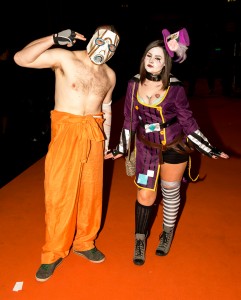



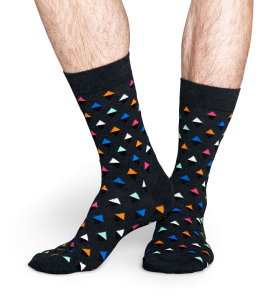 Not a happy go lucky blog entry – you may want to move along if you’re already in a down mood.
Not a happy go lucky blog entry – you may want to move along if you’re already in a down mood.